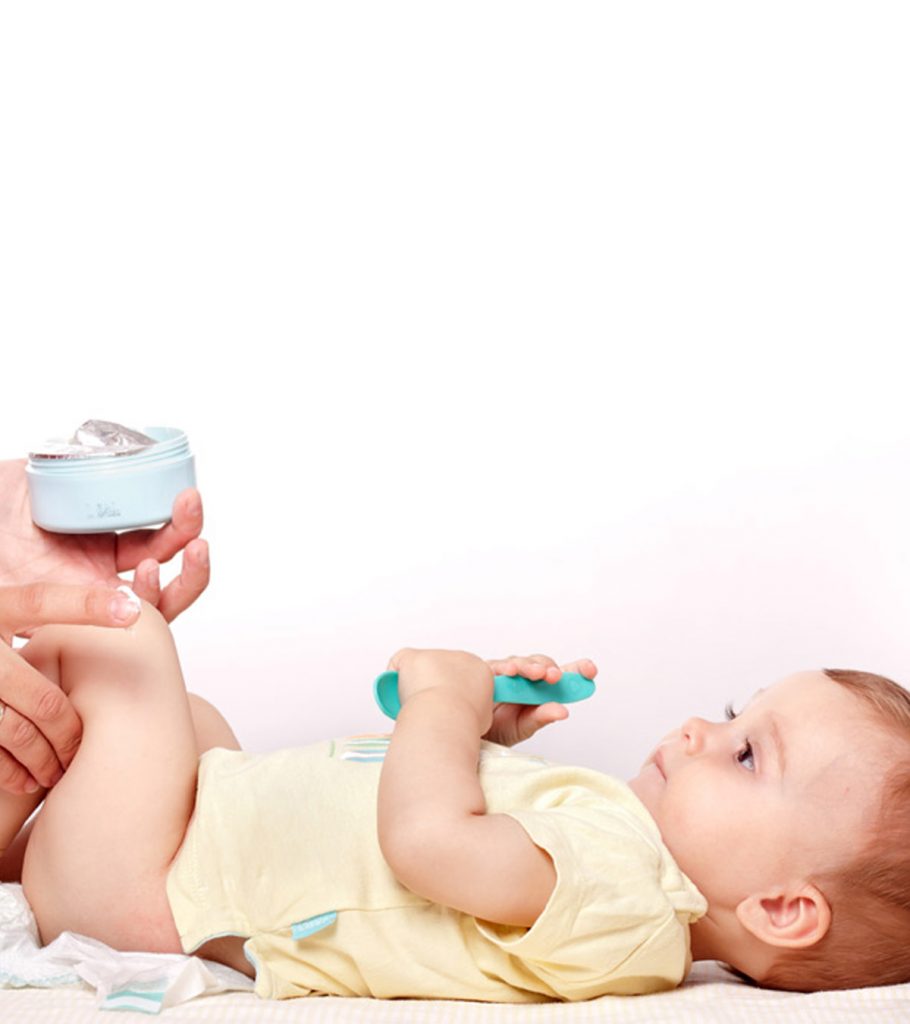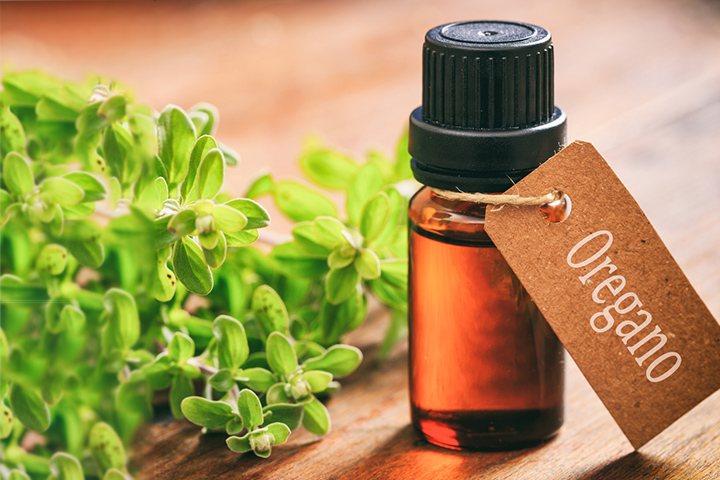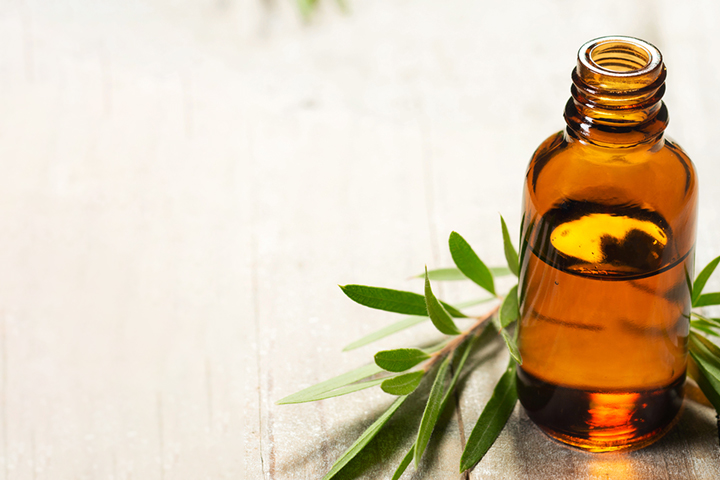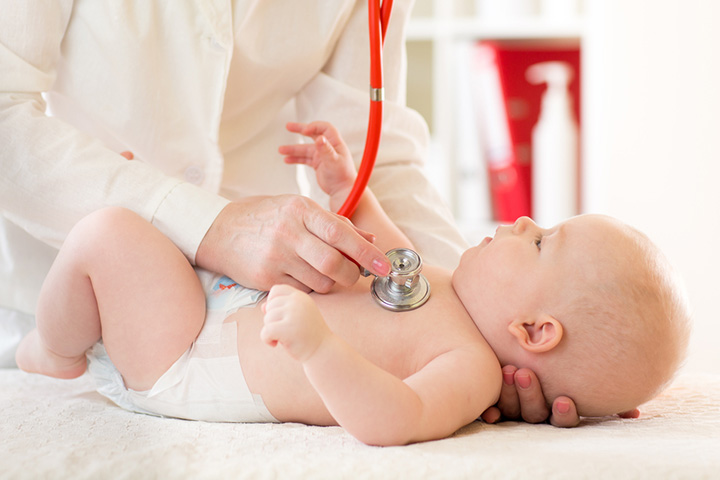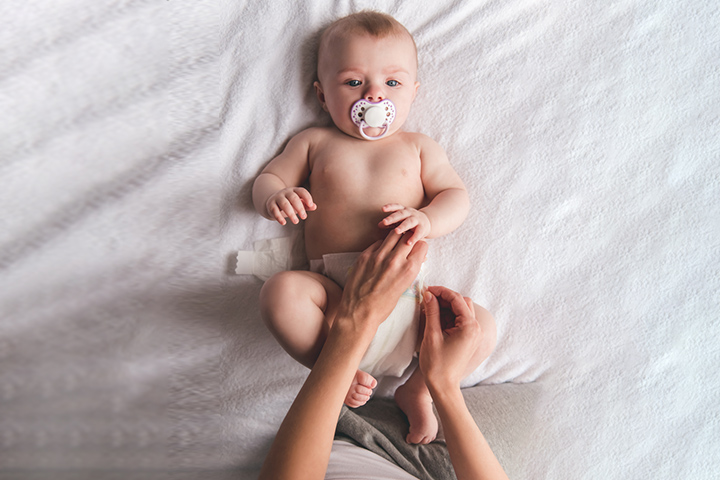Diaper rash in babies, also called diaper dermatitis, occurs on the diaper-covered skin of infants and neonates and is painful and inflamed (1). For some babies, a fungus called candida, commonly known as yeast, may infect the rash, resulting in a yeast diaper rash. So, read this post to know more about the causes, symptoms, home remedies, treatment, complications, and prevention of diaper rash in babies.
Is Yeast Infection Diaper Rash Common in Babies?
According to the US National Institutes of Health, yeast diaper rash infections are very common in babies (2). The candida fungus infection is the most common infection associated with diaper rash and is reported in more than 80% of infected diaper
cases (3).
What Causes A Yeast Infection In The Diaper Area?
Candida albicans fungus is the main reason for yeast diaper rash (3). The following factors might aid the fungal invasion in the diaper region (4) (5).
- Diapers create a typical condition of moisture and friction in the baby’s buttock area. These conditions are conducive for the growth of fungus.
- Urine and fecal matter can raise the pH of the skin, thus making it an ideal environment for fungus to grow and multiply. Frequent stools due to diarrhea might increase the risk.
- Not changing the diaper frequently and not cleaning the area well.
- Babies who have an existing oral or esophageal candida infection may be at a greater risk since the fungus can find its way to urine and stool.
- The good bacteria in the human body keep the growth of fungus under check. Direct usage of broad-spectrum antibiotics by the baby or ingestion of milk from mothers who took antibiotics might increase the chance of yeast infection.
- Fungi might grow and thrive in areas with high carbon dioxide levels, which are typically seen in the occluded regions under a standard disposable diaper.
How To Identify The Symptoms Of A Yeast Diaper Rash?
Symptoms of a yeast-induced diaper rash are different from the regular diaper rash. The treatment for both is also different. Therefore, it is essential to identify the type of rash (3).
| Yeast Diaper Rash Symptoms | Regular Diaper Rash Symptoms |
|---|---|
| Deep red skin patches with dots, pimples, and scales | Pink to red skin which might be smooth or a little chapped |
| The rash does not respond to regular diaper creams and remains for more than three days | Rash heals in two to three days with the help of regular rash creams |
| Pustules or pimples may form around the main rash, causing ‘satellite lesions’ | There are no pustules surrounding the main rash |
| Might be accompanied by oral candidiasis | Usually not accompanied by oral candidiasis |
| Erosion and ulceration of skin may occur in severe cases | Unlikely to cause erosion and ulceration of the skin |
Both cases may cause itching and burning sensation, which non-verbal babies will not be able to communicate.
Home Remedies For A Yeast Diaper Rash
There is no extensive research-based evidence to prove that home remedies can resolve a yeast diaper rash. Diaper rashes often occur close to the genitals. Therefore, it is strongly recommended to avoid implementing any home remedies without your pediatrician’s approval.
The following are a few home remedies for yeast diaper rash, supported by anecdotal evidence and limited scientific evidence.
- Chamomile: A few studies have noted that chamomile-based ointments are effective in diaper rash treatment (6). However, it is also noted that the extracts of the chamomile flower may lead to allergies (7).
- Oregano oil: Laboratorial studies have found oregano oil to be effective in inhibiting the growth of the candida fungus (8). But more research in humans is needed to prove them to be effective for yeast diaper rash treatment.
- Oats bath: Adding oatmeal tied in a cloth to the baby’s bathwater to help with the nappy rash, is an ancient and commonly used technique. But there is limited medical research on it.
- Tea tree oil: Tea tree oil is said to be effective for some diaper rashes, but its efficacy for a yeast diaper rash on babies is not completely studied (9).
- Gentian violet:Gentian violet is a compound often used to cure oral candidiasis in babies. However, its efficacy for yeast diaper rash is unknown. Consult your doctor before considering its use for treating yeast diaper rash in babies.
If you plan to use a home remedy, do a patch test on a small area of healthy skin before applying it to the affected area. It will let you know if the baby has an allergy to the substance. It is best to see a doctor promptly in some situations.
When To See A Doctor?
Consult a doctor during the following situations.
- The baby is younger than six weeks and got a rash.
- The diaper rash does not go away in three days.
- The rash is spreading, especially beyond the diaper area.
- It is accompanied by bleeding or pus discharge.
- The baby has a fever.
- The rashes erupt on other parts of the body as well.
Diagnosis Of Yeast Diaper Rash
The yeast diaper rash is mostly diagnosed by its symptoms and clinical examination. In some cases, the doctor may perform the following tests to confirm the diagnosis (1) (3).
- A KOH (potassium hydroxide) test: A scraping from the lesion is stained with potassium hydroxide and examined under a microscope for the presence of fungus (10)
- Sample staining: A small sample of tissue is scraped using a cotton swab. The scraping is placed on a slide and stained with special stains, which lets the doctor know the presence of yeast cells.
- Mycological cultures: The doctor runs a swab on a lesion. The matter collected on the swab is then incubated in a laboratory for a few days to check the growth of fungus.
Treatment For Yeast Diaper Rash In Babies
The treatment usually involves the use of topical antifungal creams containing the following compounds (3).
- Nystatin
- Clotrimazole
- Ketoconazole
- Bifonazole
- Sertaconazole
- Ciclopirox
Oral antifungal medicines are prescribed only in severe cases or when the fungal infection is also present in the mouth and the digestive system.
Never use over-the-counter antifungal medicines for the baby. The doctor will prescribe a medication based on the severity of the infection and the age of the baby. Also, if your baby’s doctor has already prescribed medications, then do not use home remedies since they may interfere with the treatment.
Complications Of Diaper Yeast Rash
Most of the time, there are no severe complications of diaper rash. However, sometimes it might cause problems: (11) (12).
- The lesions may bleed, causing pain.
- Transmission of infection from the diaper area to other areas of the body.
- The fungus may spread to the mouth, causing oral thrush and esophageal thrush.
- Lactating mothers might catch the fungus, thus causing nipple thrush.
- The baby may sleep and eat less due to the irritation caused by the yeast diaper rash. Inadequate food and sleep might affect the overall health of the baby.
Complications seldom occur if treatment is provided promptly. Yeast diaper rash infections can also be prevented in babies.
Prevention Of Yeast Diaper Infection
Certain precautions and practices might help in the prevention of yeast infections in the diaper area (13).
- Use good quality breathable diapers for your baby.
- Do not tie the diaper very tight.
- Have diaper-free time for the baby’s skin to be able to breathe.
- Change the diaper frequently.
- Clean the baby’s groins and buttocks with warm water after they soil. Let the skin dry before putting on a fresh diaper.
- If the baby has a fungal infection in some other area of the body, then avoid using the same towel to clean and wipe healthy areas of the body.
- It is better to use soft washcloths instead of chemical wipes for your baby’s delicate skin. It might help maintain the right pH of the skin.
- Wash your hands with soap and water before and after you clean your baby to prevent infections from reaching the baby’s body.
- You can speak to a pediatrician and use barrier ointments like petroleum jelly or zinc oxide for the prevention of rashes.
Lana, a mother of three girls, shares the measures she adopted to combat a severe diaper rash in her baby. She says, “When Lucy’s (her daughter) was really bad, I was changing her diaper about every 2 hours–even through the night. And that was doing all the cleaning, drying, and sealing steps EVERY time. Thankfully, all 3 girls grew out of this by about 3 months (i).” Lana’s three-step regimen to address diaper rash with bright red raw spots involves avoiding baby wipes and opting for a gentle washcloth with warm water or a spray bottle. She advises wiping gently to ensure thorough cleaning and the use of a low-heat hair dryer to dry the area effectively. Additionally, Lana suggests using an appropriate ointment to seal and treat the rash.
Yeast diaper rash is a frequent but treatable condition in newborns, generally caused by Candida albicans fungus. Moisture and friction in the baby’s buttock area, frequent urine and diarrhea, not changing diapers regularly, use of broad-spectrum antibiotics directly by the baby or ingesting from breastmilk, and other factors contribute to the risk of fungal invasion. Therefore, giving your infant enough diaper-free time and using diapers with caution will help reduce the risk of yeast diaper rash infection. Some home treatments, such as chamomile-based ointment or cream and oats baths, may also be helpful.
Key Pointers
- The candida fungus causes diaper rash, a painful and inflamed condition on a baby’s diaper-covered skin.
- Symptoms of diaper rash include deep red skin patches with dots, pimples, and scales that don’t respond to regular diaper creams.
- Home remedies like chamomile ointments, oregano oil, oatmeal baths, tea tree oil, and gentian violet can be used, but their medical efficacy is uncertain.
- If the rash persists for more than three days or spreads over the baby’s skin, consult a doctor.
Diaper rash is a common occurrence that can be caused by baby urine or the growth of fungus. Learn helpful tips to cure it and keep your baby comfortable and rashes-free.
